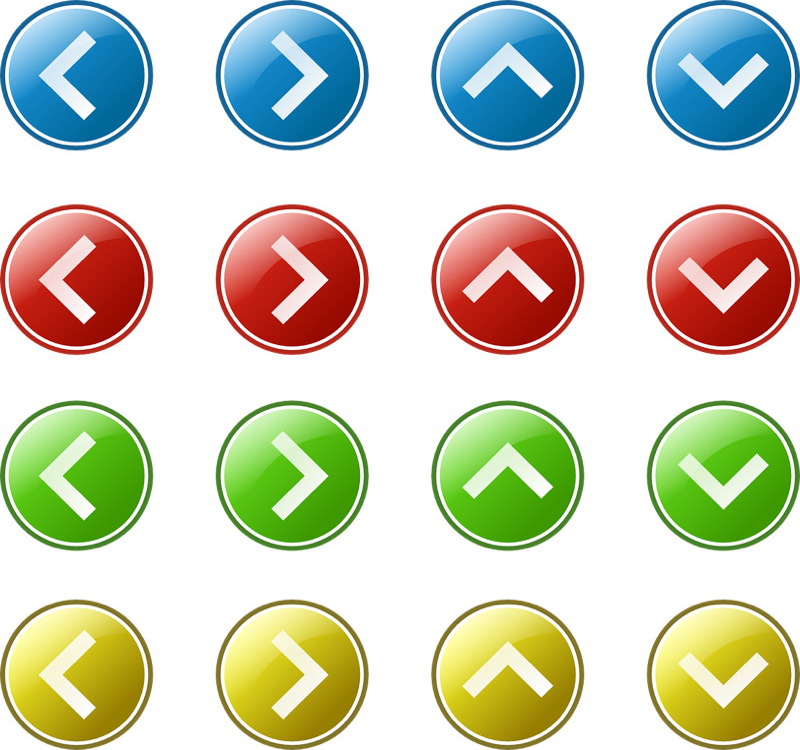
31 May Beatboxing Patterns like Justin Timberlake
Whack, Whack, TAP. Whack, Whack, TAP. Whack, Whack, TAP.
Those are the sounds that emanated from a classroom that I regularly passed during my daily rounds as a technology coordinator.
One day my curiosity got the best of me and I peaked through the small, rectangular window at the top of a closed door. What I saw resembled a much more organized microcosm of the stands behind an NBA basketball hoop; twenty kindergartners standing, smiling, and banging two-foot long tubes together. Whack, Whack, TAP. Whereas my recall of “thundersticks” at basketball games was a buzzing, haphazard collection of noises, these little kids were using their cylinders to make beats. No voices, just beats.
The lesson played out in what appeared to be a choreographed fashion. Their “band leader” stopped and the students dropped the noise makers to their sides. With eyes focused and hands antsy for the next series, the teacher used her stick to conduct half of the class.
Whack, TAP, Whack, Whack, TAP.
The left side of the classroom began their rhythmic chorus. She turned to the others and began a much quicker, progressive pattern. TAP, TAP, TAP. The new section followed along and eventually melded their musical contributions to the other slower sounds.
I mentally filed the observation when the teacher caught me spying through her window. What was she doing? Why was she spending precious class time banging away on thundersticks?
I caught up with her during lunch and began firing off questions. She said:
It was math time. We have been studying patterns. I thought that banging some sticks together would be a much better activity than copying letter patterns on a worksheet. You know that pattern recognition is an extremely important part of developing young children's number sense, right?
I gave her a reassuring nod even though I could not flip through my brain’s rolodex fast enough to recall this important but forgotten knowledge. Hours later and I still could not remember. By the end of the day, I had moved onto the next fire and forgotten all about what I saw.
Until yesterday. As fate would have it, I came across two info nuggets that sparked my memory. One was a piece of new research on concrete/abstract labels in pattern recognition instruction and the other was a clever video on how to learn beatboxing.
Pattern Recognition
Let’s get this out of the way: What is pattern recognition and why is it important?
Pattern recognition has different meanings depending on the context. Machine learning enthusiasts use this term synonymously with data mining as a way of finding regularities in irregular data (“Pattern Recognition,” 2015). I prefer a more general explanation that situates pattern recognition in the domain of teaching and learning while retaining broad applicability. “Pattern recognition is the ability to recognize order in a chaos. Patterns can be found in ideas, words, symbols, numbers, and images. They can also be found in behavior, routines, and in nature” (Powers, 2013).
Mathematically speaking, why is pattern recognition important in education? “Identifying and extending patterns is an important process in algebraic reasoning (i.e., representing generalizing, and formalizing patterns and regularity in all aspects of mathematics). Simple repetitive patterns can be explored as early as kindergarten” (Van de Walle, 2004, pp. 417-418). It’s such a fundamental skill that the National Council of Teachers of Mathematics chose algebraic thinking as a content standard that spans all grades, Pre-K through 12th.
I know this now after looking it up and doing a bit of reading.
Seeing the teacher guide her students’ beats with thundersticks indicated that she knew that patterning was important. It was the way in which she went about the learning experience that was foreign to me. I was more accustomed to pattern strips and manipulatives- a series of letters (A, B, B, A, B, B), colored unifix cubes (red, red, blue, red, red, blue), and shapes (left, right, up, down).

It seems that the thunderstick-wielding teacher not only knew of the importance of active pattern making, but she also either intentionally or unintentionally grounded it an abstraction. The latter is apparently important.
New research published in Child Development suggests that repeated patterns that are abstract are preferable to concrete cases when young children are learning this mathematical concept (Frye, McNeil, & Rittle-Johnson, 2015). For example, presenting preschoolers with physical features that repeat like the red and white colors in a flag is less instructionally sound than an arbitrary but similar pattern (i.e., A, B, A, B).

“Children in the study solved a set of patterning problems in which they watched an experimenter explain a model pattern using either concrete labels or abstract labels and then tried to recreate the same pattern using a different set of materials. [Those] who were randomly assigned to the abstract labels condition solved more problems correctly than those assigned to the concrete labels condition” (University of Notre Dame, 2015).
“Even though concrete labels seem better because they are more familiar and accessible to children, abstract labels may help focus attention on the deeper structure of patterns. These findings suggest that something as minor as the types of labels used during instruction can affect children’s understanding of fundamental early math concepts.”
This article’s results and witnessing the thunderstick patterning got me thinking: What about beatboxing? Surely students could make “Psts” and “Booms” like Justin Timberlake, right? After all, beatboxing is just a series of guttural patterns at different speeds and intonations. How could it be more abstract?
Beatboxing
For the uninitiated, beatboxing “is a form of vocal percussion primarily involving the art of producing drum beats, rhythm, and musical sounds using one’s mouth, lips, tongue, and voice” (“Beatboxing,” 2015). Its origin dates back to the 19th century but beatboxing’s rise in popularity coincides with the emergence of hip-hop and rap. I like Justin Timberlake’s brand of rhymin’-and-spittin’ best, in part, because it is relatively free of curse words.
Are you able to recognize the pattern that JT repeats? My phonemic interpretation of the beatbox in the first 45 seconds goes something like this: Bmph, Bmph, Kee-Bmph, Ba, Bmph, Bmph, Bmph, Chi. He repeats this over and over with minor revisions if you block out the musical accompaniment and his occasional riffing.
Trying to recognize patterns in beatboxing might be a worthwhile activity for older students. I don’t believe that it’s appropriate for primary students- that’s not the point that I am making through this connection. What I do think might be a suitable learning experience is the act of making a beatbox rhyme. Just not up to the ridiculously high bar that JT sets.
Consider the following video from the Shlomo Beatboxing Masterclass. Using just the sounds from gutturally uttering P, T, and K, Shlomo demonstrates that you can make some some very neat music with simple combinations.
Yes, some of what Shlomo shows might be too difficult for kindergarten students. Speed might be a factor that inhibits classroom utility. The repeated pattern might also be too advanced. However, I do see some potential in beatboxing as a form of pattern practice in an elementary class.
Will you help develop the next Justin Timberlake while simultaneously developing mathematical understanding?
- [accordionitem]
Amandaelizabeth84. (2014). Dots, Spot, Colorful, Pattern. Retrieved 30 May 2015, from http://pixabay.com/en/dots-spot-colorful-pattern-design-506495/
Beatboxing. (2015, May 18). In Wikipedia. Wikipedia. Retrieved from http://en.wikipedia.org/wiki/Beatboxing
Nemo. (2012). Arrows, Left, Right, Down, Up. Retrieved 30 May 2015, from http://pixabay.com/en/arrows-left-right-down-up-buttons-29567/
Nemo. (2012). United, Flag, States, America. Retrieved 30 May 2015, from http://pixabay.com/en/united-flag-states-america-26177/
Pattern recognition. (2015, May 26). In Wikipedia. Wikipedia. Retrieved from http://en.wikipedia.org/wiki/Pattern_recognition
Powers, M. (2013, August 8). How Learning Patterns Leads to Brighter Children. Retrieved 31 May 2015, from http://www.mathrise.com/math/how-learning-patterns-leads-to-brighter-children/
University of Notre Dame. (2015, May 27). Study shows how students understand mathematics. Retrieved 30 May 2015, from http://www.sciencedaily.com/releases/2015/05/150527180912.htm
Van de Walle, J. (2004). Elementary and middle school mathematics: Teaching developmentally (5th ed.). New York, NY: Pearson Education, Inc.
Ytoyoda. (2014, April 30). 2014 Toronto Raptors Fans Air Canada Centre. Retrieved 30 May 2015, from http://commons.wikimedia.org/wiki/File:2014_Toronto_Raptors_fans_Air_Canada_Centre.jpg
[/accordionitem]


Sorry, the comment form is closed at this time.